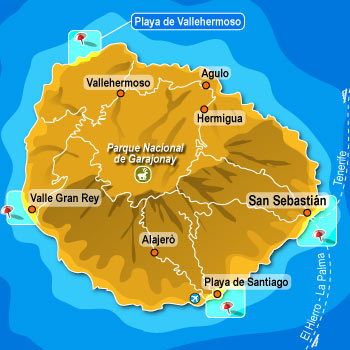
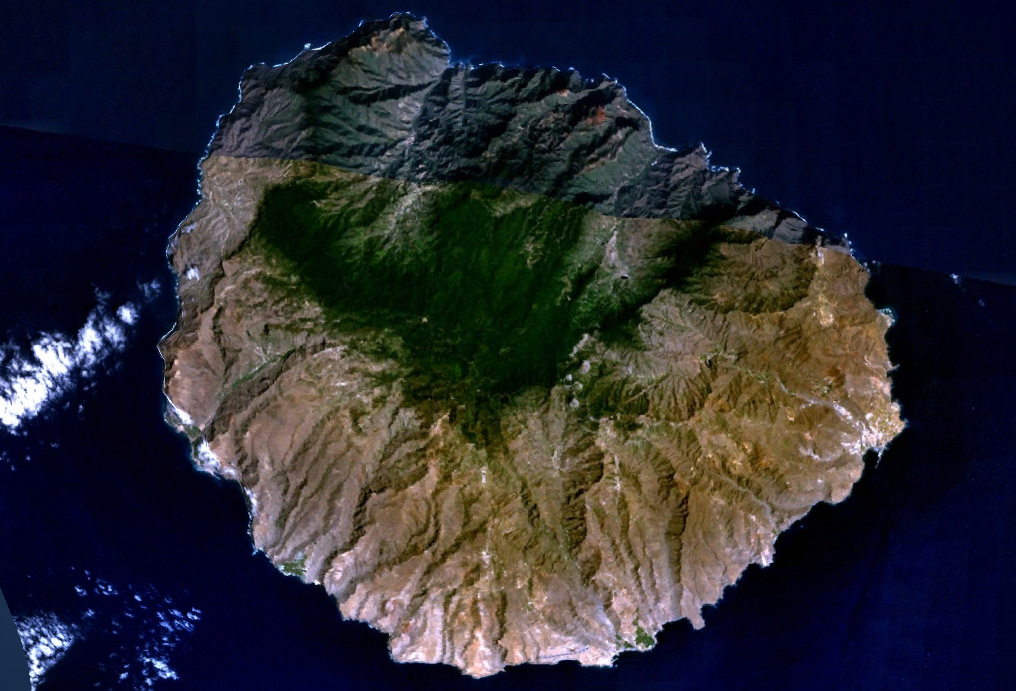
La Gomera is one of the most beautiful of the volcanic Canary Islands. Although it is the 3rd youngest of all the islands, it is very much extinct as it stopped erupting about 3 million years ago.
La Gomera is well known for its steep and rugged land. The difficult conditions of life that the people of the Island had to endure, has on many occasions forced them to seek a better life and often in South American territories. This reality is described in the epic story of the "Telemachus", the most legendary example. The sailboat Telemachus, 27 meters long and designed for the coasting trade between the islands, sailed from Valle Gran Rey on the 10th of August 1950, to Venezuela, with 170 men and a woman.Two terrible storms, water and food shortages, and even a mutiny made up this journey that ended 43 days later on the coast of Venezuela.
The island is roughly circular in shape and is about 22 km in diameter and rises to 1487 m (nearly 5000 feet) at the island's highest peak, Alto de Garajonay. Its shape is rather like an orange that has been cut into segments, which has left deep ravines or "barrancos" between them. The uppermost slopes of these barrancos are covered by the laurisilva - or laurel rain forest.
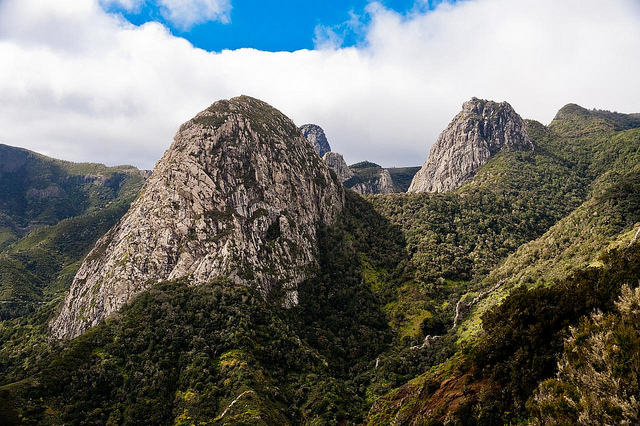
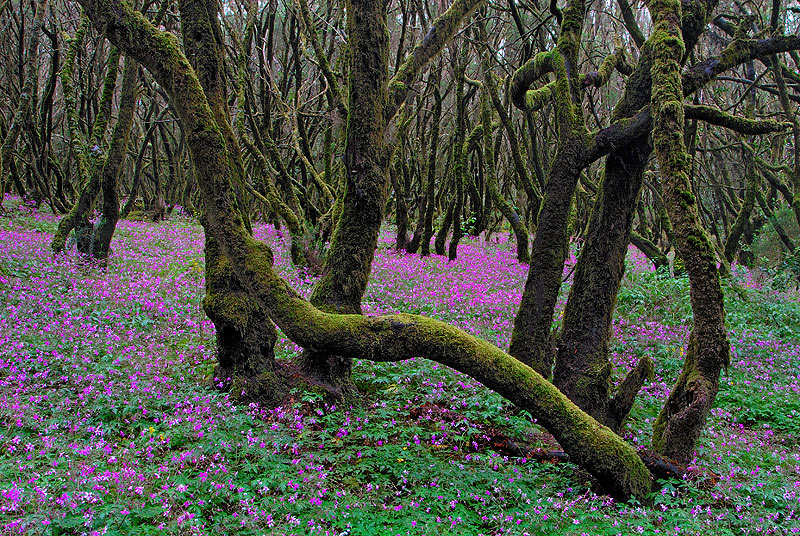
The upper reaches of this densely wooded region are almost permanently shrouded in clouds and mist, and as a result are covered in lush and diverse vegetation: they form the protected environment of Spain's Garajonay National Park, which was declared a UNESCO World Heritage Site in 1986. The slopes are criss-crossed by paths that present varying levels of difficulty to visitors, and stunning views to seasoned hikers.
The central mountains catch the moisture from the trade wind clouds and yield a dense jungle climate in the cooler air, which contrasts with the warmer, sun-baked cliffs near sea level.
Between these extremes there are a vast number of microclimates; for centuries, the inhabitants of La Gomera have farmed the lower levels by channelling runoff water to irrigate their vineyards, orchards and banana groves. This is park is one of the main attractions that La Gomera has to offer and was named after the legend of two lovers, Gara, Princess of La Gomera and Jonay, from Tenerife. The two lovers faced the disapproval of their love from their family, and decided to kill themselves by jumping from the highest peak of the island.
Garajonay's dense forest is made up of vast variety of different plant species, often surrounded by a sea of fog that gives the forest a magical aspect. These fogs are vital for the forest, producing the necessary moisture essential for the survival of this lavish green environment located within an otherwise arid island. Its existence is possible thanks to the high humidity and the mild temperatures, accompanied by little fluctuations during the year.
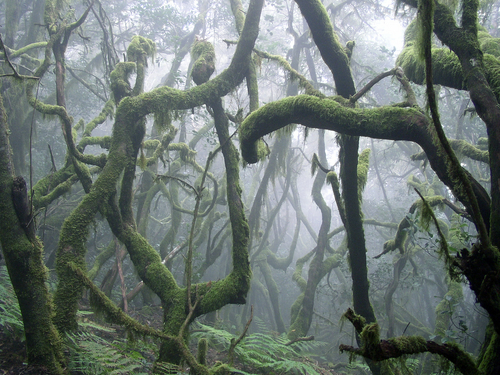
This forest of Canarian laurisilva covers an area of 4,000 hectares, representing about 11 percent of the total area of the island. It is a relic of the subtropical forests that occupied much of Europe and North Africa several million of years ago, so "Garajonay" can be considered a true living fossil.
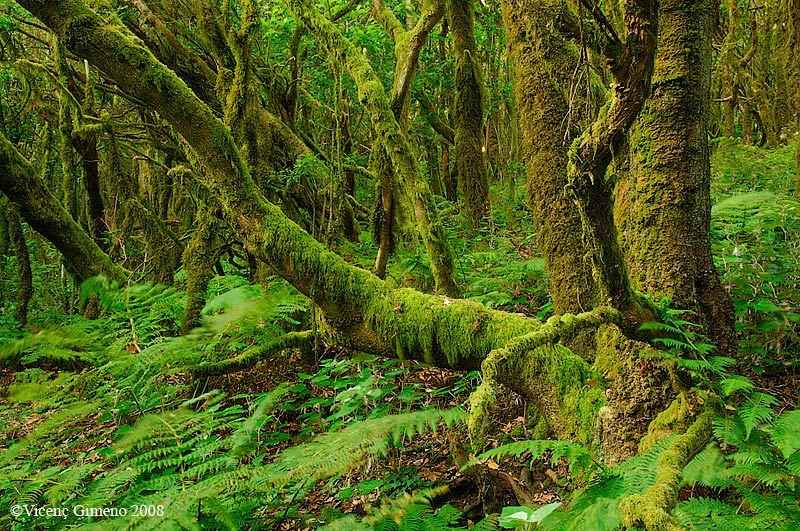
The Garajonay forest is thriving with different types of vegetation. There are about 2000 species of plants in the Park, and a high number of endemic species unique to this particular island and to the rest of the Canary Islands. Among the different forest types that can be found are the Dry Heath Fayal, in areas where there is less moisture, and the predominant species: the Mocan, the Palo Blanco, the Barbusano, heather and faille, amongst others. Throughout the park one can discover a network of streams, permanent water flows that are the best preserved of the Canaries.
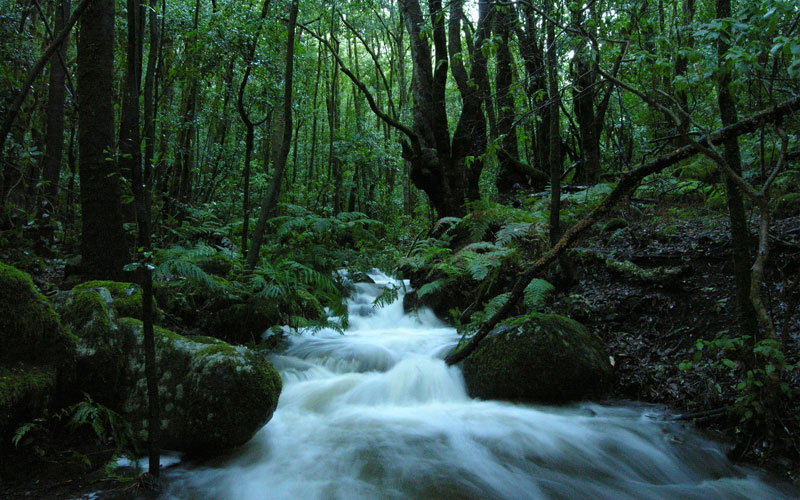
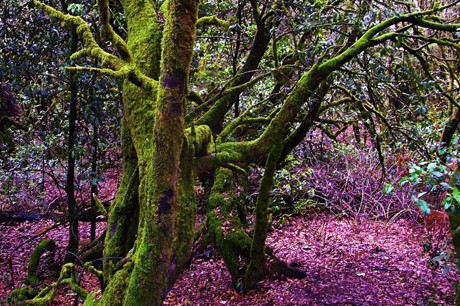
The varieties of habitats in the park are rich and diverse in fauna, consisting of invertebrates, vertebrates, amphibians, reptiles and birds, many of them endemic. Within this latter group the “Rabiche” pigeon and the “Turque” pigeon are most common.
The park is extremely well set up for visitors offering a wide infrastructure of facilities and services allowing anyone to really enjoy and better understand this truly natural gem of nature.
In these very Forests, the original inhabitants of La Gomera, The Guanches, worshipped their god, whom they called Orahan; the summit and centre of the island served as their grand sanctuary. Indeed, many of the natives took refuge in this sacred territory in 1489, as they faced imminent defeat at the hands of the Spaniards, and it was here that the conquest of La Gomera was drawn to a close. Modern-day archaeologists have found several ceremonial stone constructions here, which appear to represent sacrificial altar stones, slate hollows or cavities. It was here that the Guanches built pyres upon which to make offerings of goats and sheep to their god. This same god, Orahan, was known on La Palma as Abora and on Tenerife and Gran Canaria as Arocan. The Guanches also interred their dead in caves, which still dot the landscape.
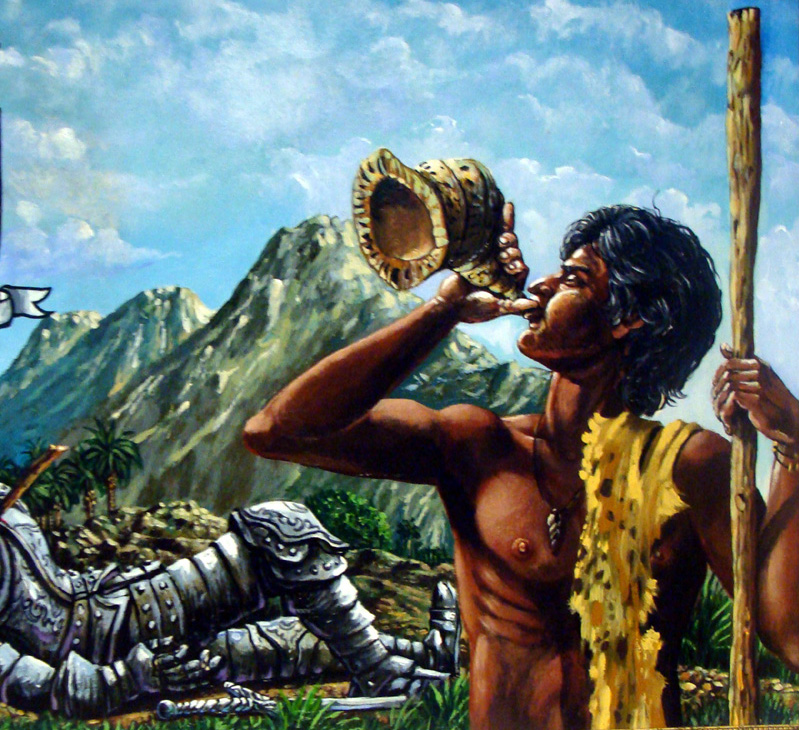
Christopher Columbus made La Gomera his last port of call before crossing the Atlantic in 1492 with his three ships. He stopped here to replenish his crew's food and water supplies, intending to stay only four days. Beatriz de Bobadilla y Ossorio, the Countess of La Gomera and widow of Hernán Peraza the Younger, offered him vital support in preparations of the fleet and he ended up staying one month. When he finally set sail on September 6, 1492 she gave him cuttings of sugarcane, which became the first to reach the New World. After his first voyage of Discovery, Columbus again provisioned his ships at the port of San Sebastián de La Gomera in 1493 on his second voyage to the New World, commanding a fleet of 17 vessels. He visited La Gomera for the last time in 1498 on his third voyage to the Americas. The house in San Sebastián in which he is reputed to have stayed is now a tourist attraction.
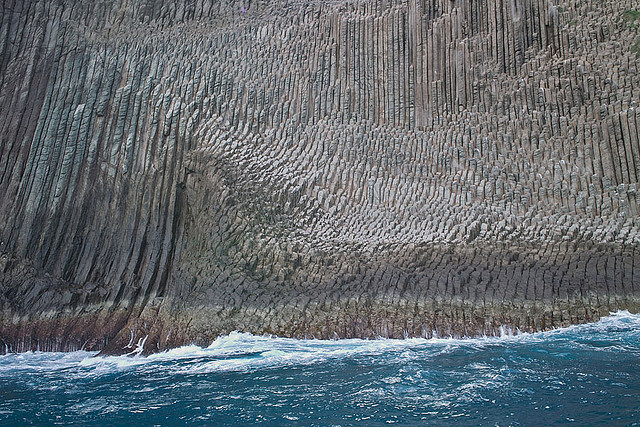
Another distinctive landmark of La Gomera is an unusual volcanic rock formation called “Los Organos” which is found in the northern region of Vallehermoso. It is fact a magnificent display of balsalt columns and some of the most spectacular of anywhere in the world, similar to the Giant’s Causeway in Ireland or Fingal’s Cave in Scotland but only much higher. This wonder of nature, unfortunately, can only be appreciated from the sea but there are regular boat trips to go out and enjoy this beautiful sight while at the same time enjoying some local whale watching. The reason they are called “Los Organos” (The organs) is fairly self-explanatory, as they resemble the metal pipes of a cathedral organ. The explanation for this particular formation is that this volcanic rock face was in fact the inner wall of the volcano’s mouth and when it entered into eruption the lava rose up but progressively rose with more and more difficulty as the lava became denser and cooled down. Eventually the Volcano split apart leaving the rock face open for the world to see. The wall stretches to a height of 262ft and has a width of 575ft. Some of the individual “organ pipes” are over 3ft wide.
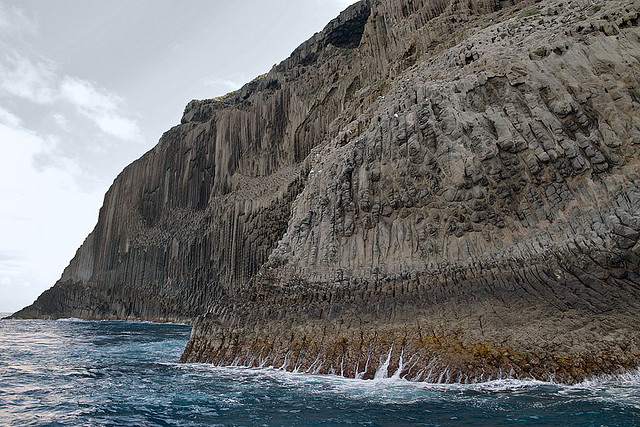
Ver mapa más grande